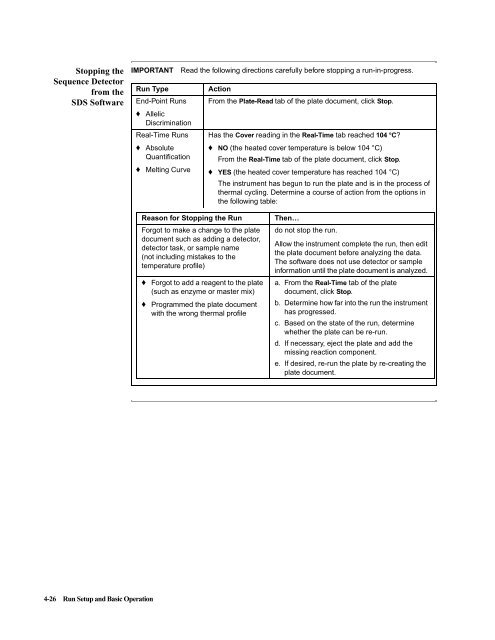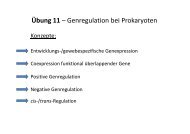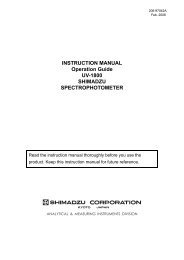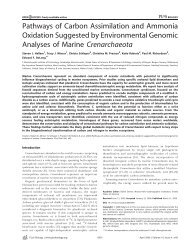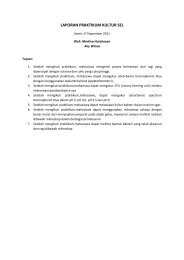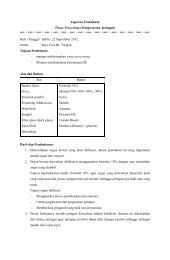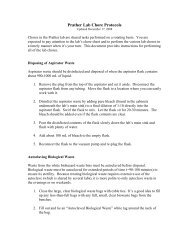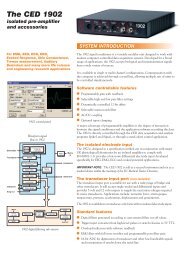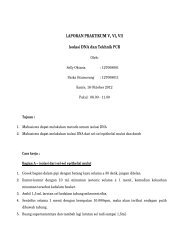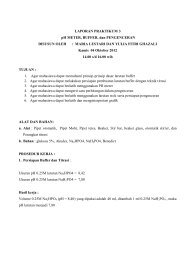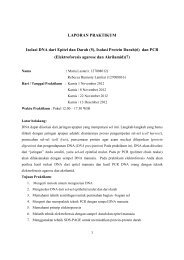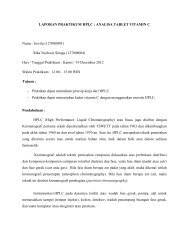ABI Prism® 7900HT Sequence Detection System ... - OpenWetWare
ABI Prism® 7900HT Sequence Detection System ... - OpenWetWare
ABI Prism® 7900HT Sequence Detection System ... - OpenWetWare
Create successful ePaper yourself
Turn your PDF publications into a flip-book with our unique Google optimized e-Paper software.
Stopping the<br />
<strong>Sequence</strong> Detector<br />
from the<br />
SDS Software<br />
4-26 Run Setup and Basic Operation<br />
IMPORTANT Read the following directions carefully before stopping a run-in-progress.<br />
Run Type Action<br />
End-Point Runs From the Plate-Read tab of the plate document, click Stop.<br />
♦ Allelic<br />
Discrimination<br />
Real-Time Runs<br />
♦ Absolute<br />
Quantification<br />
♦ Melting Curve<br />
Has the Cover reading in the Real-Time tab reached 104 °C?<br />
♦ NO (the heated cover temperature is below 104 °C)<br />
From the Real-Time tab of the plate document, click Stop.<br />
♦ YES (the heated cover temperature has reached 104 °C)<br />
The instrument has begun to run the plate and is in the process of<br />
thermal cycling. Determine a course of action from the options in<br />
the following table:<br />
Reason for Stopping the Run Then…<br />
Forgot to make a change to the plate<br />
document such as adding a detector,<br />
detector task, or sample name<br />
(not including mistakes to the<br />
temperature profile)<br />
♦ Forgot to add a reagent to the plate<br />
(suchasenzymeormastermix)<br />
♦ Programmed the plate document<br />
with the wrong thermal profile<br />
do not stop the run.<br />
Allow the instrument complete the run, then edit<br />
the plate document before analyzing the data.<br />
The software does not use detector or sample<br />
information until the plate document is analyzed.<br />
a. From the Real-Time tab of the plate<br />
document, click Stop.<br />
b. Determinehowfarintotheruntheinstrument<br />
has progressed.<br />
c. Based on the state of the run, determine<br />
whether the plate can be re-run.<br />
d. If necessary, eject the plate and add the<br />
missing reaction component.<br />
e. If desired, re-run the plate by re-creating the<br />
plate document.


